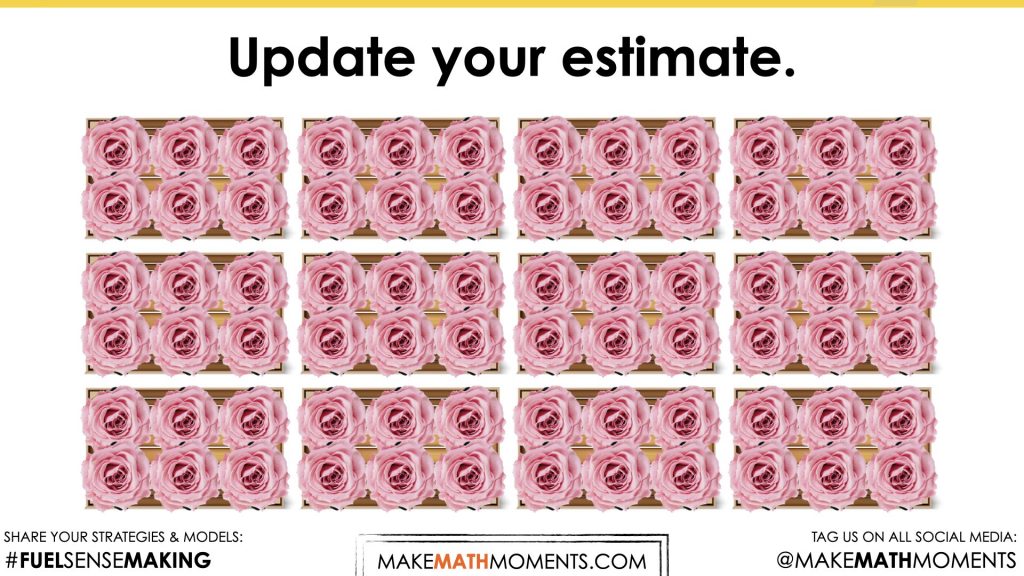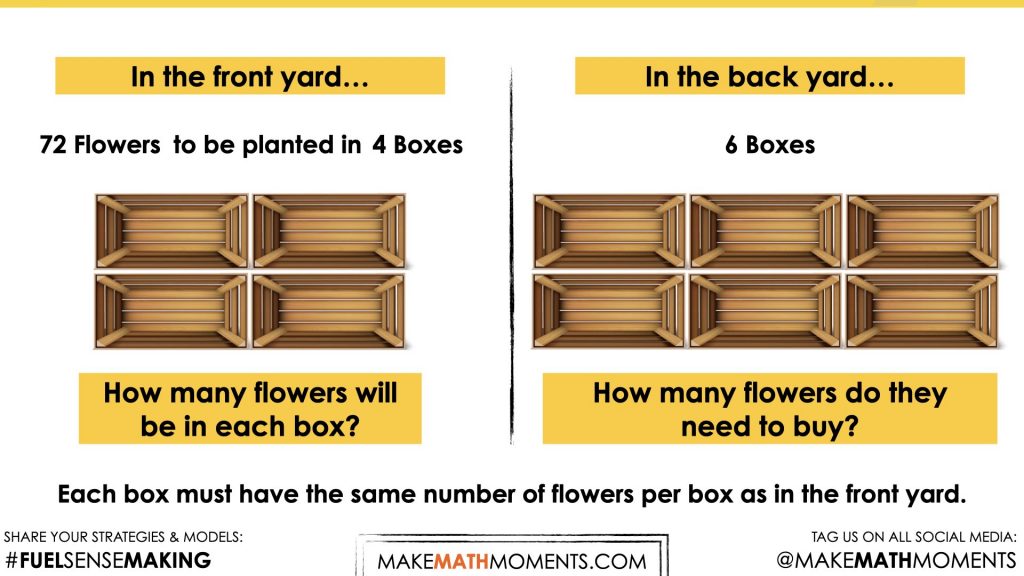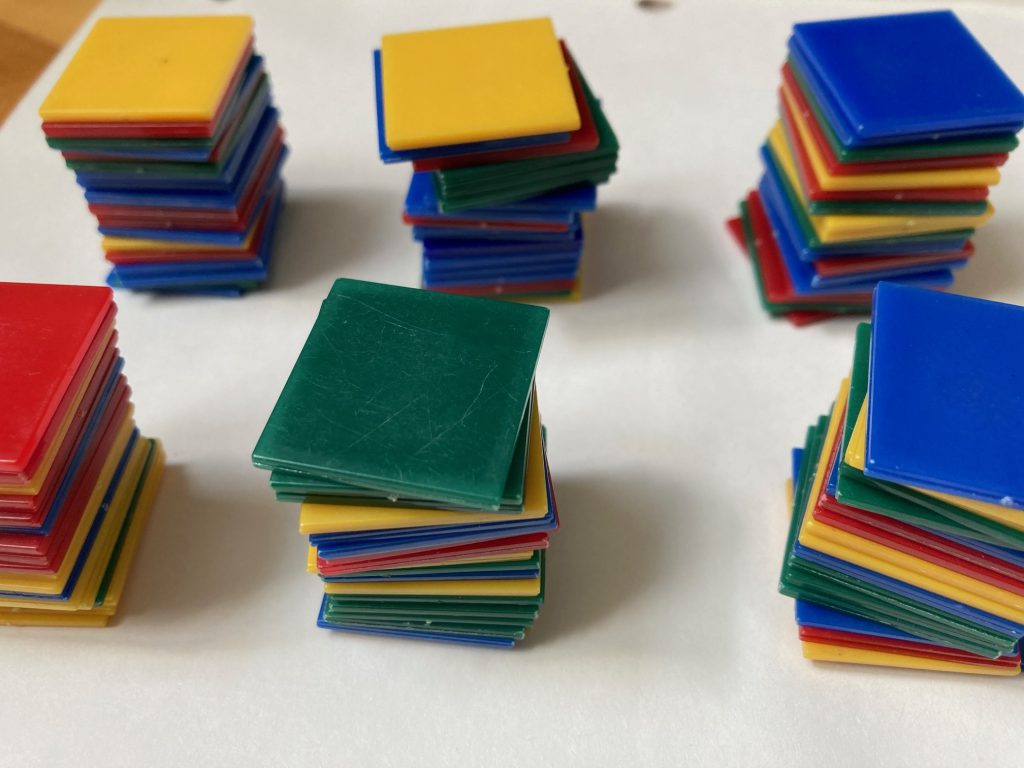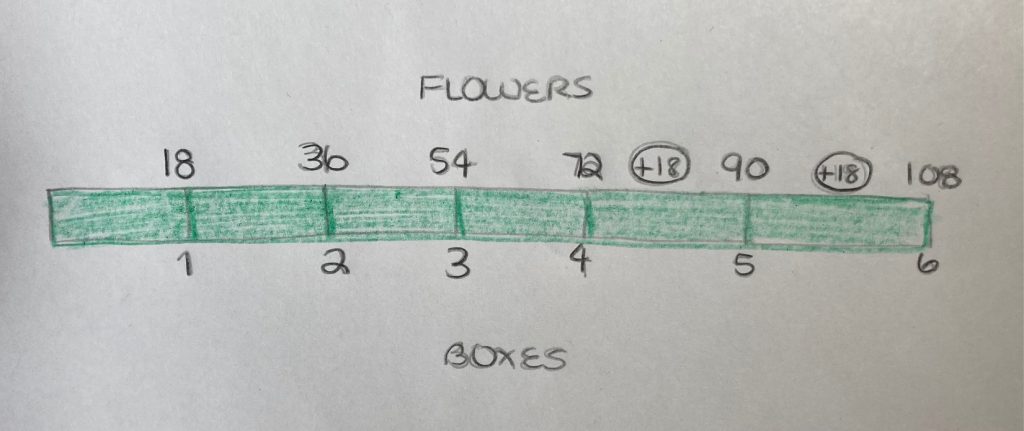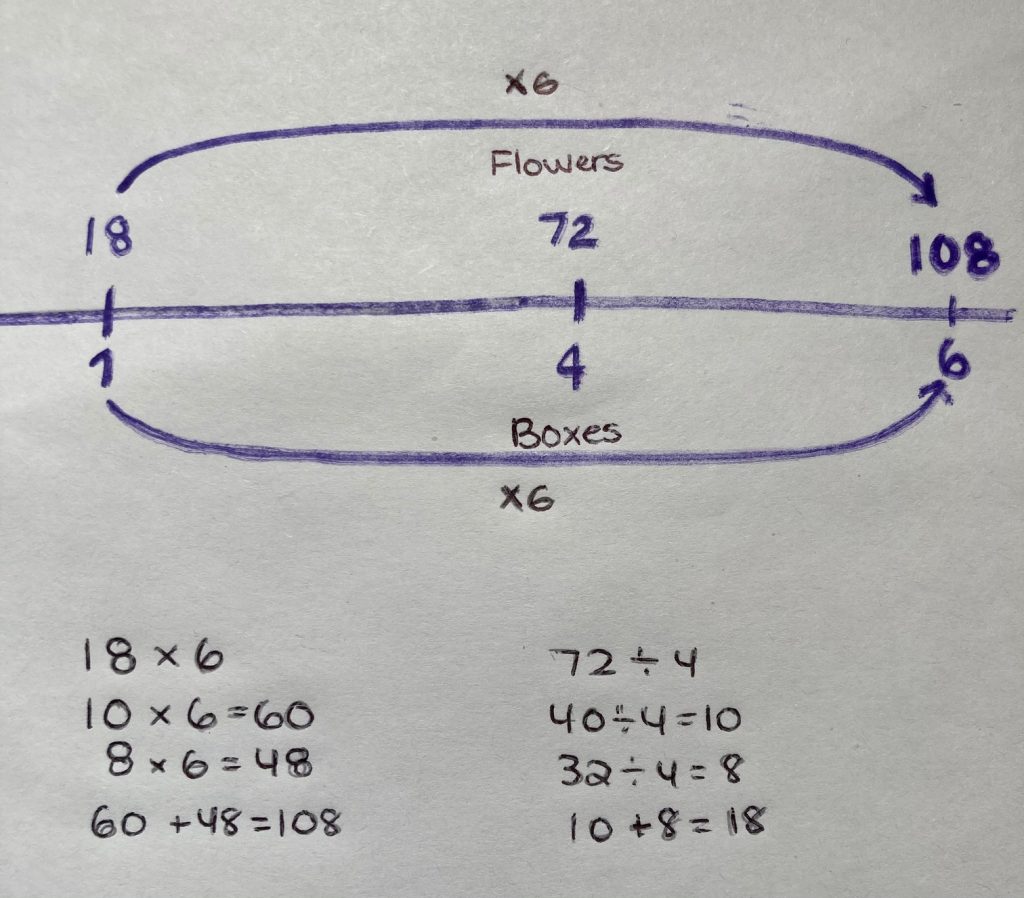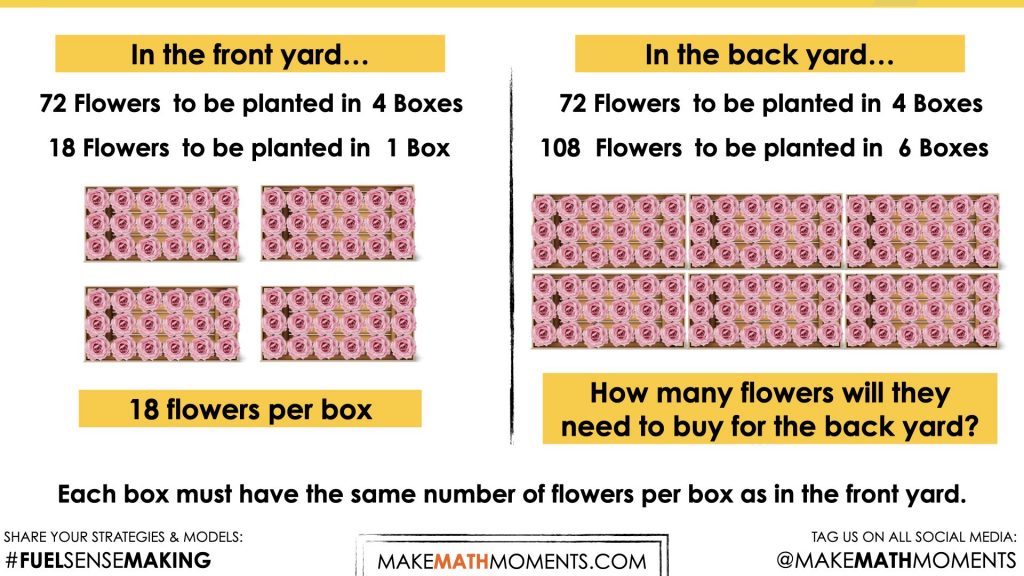PLANTING FLOWERS
RATIOS AND RATES
Introduction to ratios and rates. Students will explore both types of ratios; composed units and multiplicative comparison. They will use partitive division to reveal a rate and quotative division to determine a scale factor.
Intentionality
Spark Curiosity
Fuel Sensemaking
During Moves
Student Approaches
Next Moves
Consolidation
Reflect and Consolidation Prompts
Resources & Downloads
Educator Discussion Area
Intentionality & Unit Overview
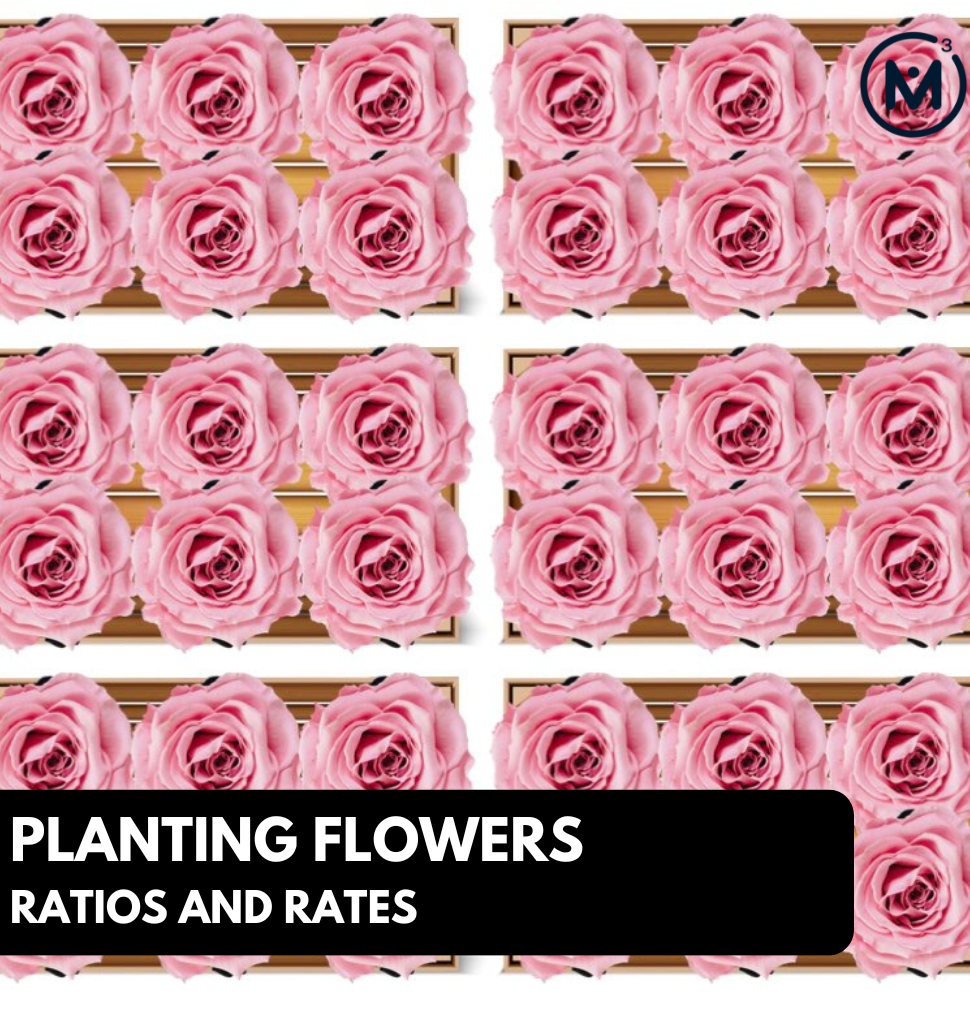
Length of Unit: 5 Days
Access each lesson from this unit using the navigation links below
Students will explore the ratio of flowers to flower boxes. They will scale the composed unit in tandem and reveal a rate.
Intentionality…
In this task, students will determine different equivalent ratios of flowers to flower beds. Students will scale the composed unit in tandem and reveal a rate through partitive division. Some of the big ideas that may emerge in today’s task include:
- There are two types of ratios; composed unit and multiplicative comparison;
- A composed unit is often (not always) a ratio with two distinct units;
- A composed unit can be scaled in tandem;
- Equivalent ratios are derived from the same rate;
- When you divide a composed unit through partitive division, you reveal a rate.
Spark Curiosity
What Do You Notice? What Do You Wonder?
Show students the following video:
Then, ask students:
What do you notice?
What do you wonder?
Give students 60 seconds (or more) to do a rapid write on a piece of paper.
Replaying the video can be helpful here.
Then, ask students to share with their neighbours for another 60 seconds.
Finally, allow students to share with the entire group. Be sure to write down these noticings and wonderings on the blackboard/whiteboard, chart paper, or some other means to ensure students know that their voice is acknowledged and appreciated.
Some of the noticing and wondering that may come up includes:
- I notice 4 rectangular boxes.
- I wonder if they are flower boxes.
- I notice flowers.
- I notice a tray of flowers that flashed on the screen.
- I notice six flowers in that tray.
- I notice more trays of flowers appear on the screen.
- I wonder how many flowers there were.
Estimation: Prompt
After we have heard students and demonstrated that we value their voice, we can land on the first question we will challenge them with:
How many flowers did you see?
Make an estimate
You might consider replaying the Spark video to give students another opportunity to visualize the structure of the nested array of flowers.
We can now ask students to make an estimate (not a guess) as we want them to be as strategic as they can possibly be. This will force them to determine a number of flowers that would be reasonable before determining a more precise answer. Consider asking students to think about a number of peas that would be “too low” and a number that would be “too high” before asking for their best estimate in order to help them come up with a more reasonable estimate. Encourage students to share their estimates, however avoid sharing their justification just yet. We do not want to rob other students of their thinking.
Estimation: Update & Partial Reveal
Show the following image and prompt students to:
Update your estimate without counting each individual flower.
While students are updating their estimate, listen and observe as students work to make updates. What strategies and mathematical models are students leveraging? Are they:
- Counting by ones?
- Skip counting?
- Repeatedly adding?
- Using spatial reasoning?
- Using an algorithm?
Reveal the number of flowers.
Celebrate student estimates that were very close to the actual number of peas using a routine of your choice as we head into the sense making portion of this lesson.
Fuel Sense-making
Crafting A Productive Struggle:
Now that we have confirmed that there are 72 flowers to be planted, begin playing the following animated video while verbally sharing the context using a script similar to this one:
The gardener has planted all 72 flowers in the four flower boxes in the front of the house, ensuring that every flower box has the same number of flowers.
In the backyard, there are six more identical flower boxes. How many flowers will he need to fill the six flower boxes in the backyard? Keep in mind that the gardener wants to ensure that all flower boxes are exactly the same.
Consider pausing the final frame of the video or leave the following image up on the screen for students to begin their productive struggle:
Be sure to remind students that they are not to use a calculator to determine the number of flowers for six flower boxes as using that tool will rob them of this mathematical experience. Students should use a mathematical model in order to communicate their thinking.
During Moves
While Students Are Productively Struggling….
Monitor student thinking by circulating around the room and listening to the mathematical discourse. Select and sequence some of the student solution strategies and ask a student from the selected groups to share with the class from:
- most accessible to least accessible solution strategies and representations;
- most common/frequent to least common/frequent strategies and representations; or,
- choose another approach to selecting and sequencing student work.
The tools and representations you might see students using to convince their peers and/or the teacher include:
- Concrete manipulatives to fairly distribute the flowers.
- Partitioning an area model into four equal groups.
- Considering the multiplicative comparison between 4 and 6.
- Pictorial representation of fair-sharing.
- Double number line to determine equivalent ratios.
- Scaling in the ratio table.
Have students share their strategies and reasoning for how to represent the number of flowers in six boxes. Ask them to convince you and their peers that their answer is correct by sharing mathematical models.
Discuss their strategies and elicit student thinking during your consolidation to build off of their current prior knowledge and understanding rather than “fixing” or “funnelling” student thinking to a strategy and/or model that does not connect to their strategy and/or approach.
Student Approaches
Student Approach #1: Concrete Partitive Division and Counting On
I started with 72 chips to represent the four flower boxes. I started fair-sharing the flowers one at a time until I ran out of chips. Each flower box had 18 chips (or flowers). If every box has 18 flowers, then I just counted 18 more for box five, and 18 more for box six. 72, 73, 74, 75, 76… I counted 108 flowers altogether.
Student Approach #2: Partitioning a Bar Model and Repeated Addition
I started with 72 flowers and four boxes. That means that 2 boxes will have half the number of flowers (36), and one box will have half that many flowers (18). If every box had 18 flowers, then I have to add 18 twice to 78 to find out how many flowers are needed for six boxes.
Student Approach #3: Scaling on the Double Number Line and Multiplicative Thinking
I drew a number line to represent the flowers and the boxes. I realized that if I could figure out how many flowers are in one box, then I would know how many flowers are in six boxes. If there are 72 in four boxes, I have to divide both 72 and 4 by 4 to get one box and 18 flowers. Then I just multiplied 1 by 6 to get 6 boxes, and 18 by 6 to get 108 flowers.
Next Moves
Consolidation
Consolidate your intentionally selected student solutions. Look for similarities in students’ approaches along the developmental continuum of counting, to addition and eventually multiplicative thinking.
Consider how students went about representing this ratio, a composed unit of flowers to boxes.
Explore all of the equivalent ratios revealed through student solutions.
72 flowers : 4 boxes
36 flowers : 2 boxes
18 flowers : 1 box
108 flowers : 6 boxes
Ask the students the following question:
What do all of these ratios have in common?
Students might notice that they all include two distinct units (flowers and boxes). They might also notice that all of the ratios are equivalent, they are derived from the same rate (18 flowers/box). Meaning, that nested within each of those equivalent ratios are a different number of iterations of the same rate of flowers per box.
Here is a short silent solution animation video that will be helpful as you prepare to facilitate this consolidation:
Many students likely solved this problem by exposing the rate. When you divide 72 flowers by 4 boxes through partitive division (fair-sharing), you reveal a rate of flowers per box.
Key takeaways from today’s lesson:
- 72 Flowers : 4 Boxes is a ratio.
- This ratio is considered a composed unit, we have two distinct units, and they need to be scaled in tandem (meaning if I double the number of boxes, I have to double the number of flowers).
- All other ratios that are derived from the same rate (in this case 18 : 1) are equivalent ratios.
- A rate can be revealed through partitive division.
Reflect and Consolidation Prompts
Provide students an opportunity to reflect on their learning by offering these consolidation prompts to be completed independently.
Consolidation Prompt #1:
In today’s context, we explored a ratio, in particular a composed unit (flowers to flower boxes). Create your own context that includes a composed unit. Use a model to represent at least three equivalent ratios that stem from the same rate.
Consolidation Prompt #2:
The gardener determines that he can transport 48 bags of potting soil in 8 wheel barrows. How many bags can he transport in…
…10 wheelbarrows?
…1 wheelbarrow?
Use a model of your choice to justify your thinking.
We suggest collecting this reflection as an additional opportunity to engage in the formative assessment process to inform next steps for individual students as well as how the whole class will proceed.
Resources & Downloads
Printable Lesson Plan PDF
Videos, Images & Media Files
Apple Keynote Presentation
Powerpoint Presentation
Printable Consolidation Prompts
Educator Discussion Area
Login/Join to access the entire Teacher Guide, downloadable slide decks and printable handouts for this lesson and all problem based units.
Explore Our 60+ Problem Based Units
This Make Math Moments Lesson was designed to spark curiosity for a multi-day unit of study with built in purposeful practice, number talks and extensions to elicit and emerge strategies and mathematical models.
Dig into our other units of study and view by concept continuum, grade or topic!


